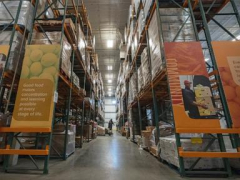WASHINGTON — With the combination of the longest government shutdown, the mass firings of government workers and a fresh cut in federal food aid, the Capital Area Food Bank in Washington is bracing for the swell of people who will need its help before the holiday season.
The food bank, which serves 400 pantries and aid organizations in the District of Columbia, northern Virginia and two Maryland counties, is providing 8 million more meals than it had prepared to this budget year — a nearly 20% increase.
The city is being hit “especially hard,” said Radha Muthiah, the group’s CEO and president, “because of the sequence of events that has occurred over the course of this year.”
The nation’s capital has been battered by a series of decisions by the Trump administration, from the layoffs of federal workers to the ongoing law enforcement intervention into the district. The added blow of the shutdown, which has furloughed workers and paused money for food assistance, is only deepening the economic toll.
The latest figures from the D.C. Office of Revenue Analysis do not account for workforce changes since the shutdown that began Oct. 1. But even the September jobs report shows that the seasonally adjusted unemployment rate hovers at 6%, compared with the most recent national rate of 4.3%, and has been the highest in the nation for months.
The economic woes appear to be reverberating politically. Democrat Abigail Spanberger won election Tuesday as Virginia’s governor after focusing her campaign message on the effects of President Donald Trump’s actions on the state’s economy.
The shutdown’s long-term impact on the regional economy will be felt long after the government reopens, experts say.
Washington has the country’s largest share of federal workers — about 20%, according to official figures — and roughly 150,000 federal employees call the area home. By Monday, hundreds of thousands of federal workers across the country will have missed at least two full paychecks because of the shutdown. Nationally, at least 670,000 federal employees are furloughed, while about 730,000 are working without pay, according to the Bipartisan Policy Center.
During the shutdown, the number of federal employees on Washington’s transit system each weekday has dropped by about one-quarter compared with ridership in September. Eateries that th






